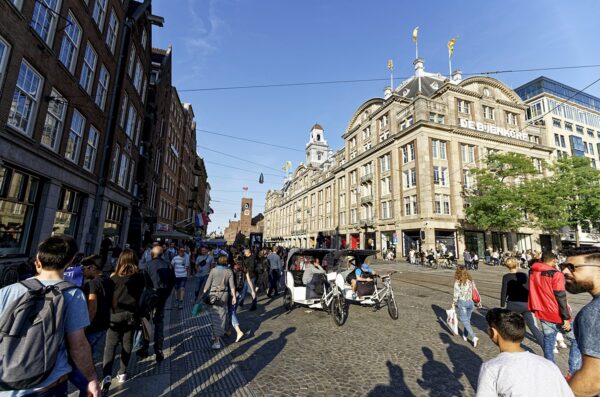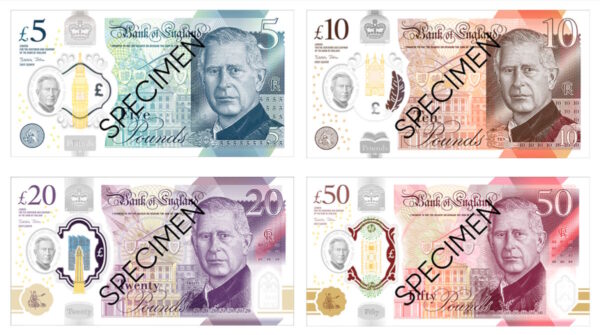
Alan Monahan writes: I wonder if you’ve totted up your Valentine’s Day sales figures. I do hope that they made nonsense of a recent poll of more than 2,000 adults in the UK by Opinium Research for PricewaterhouseCoopers.
It suggested that Valentine’s has limited appeal in Britain. Just over a half of respondents didn’t plan to buy a gift for their loved one and 48% weren’t even expecting to fork out for a card!
Perhaps your till told a different story. The good news is that those who did plan to purchase a Valentine Day gift were aiming to spend bigger than last year – making the average gift worth £29.89, a 12% increase on 2016.
Did men spend more than women in your shop? They were certainly intending to – £39.70 against £20.42, with the survey calculating that Valentine’s Day was worth a total of £458.7 million to UK retailers this year.
You’ll probably be pleased to hear that, for this particular ‘occasion’, shoppers seemed to prefer going to bricks and mortar stores – which 49% were planning to do – compared to 30% who were intending to buy online.
Matthew Hopklnson, managing director of the Local Data Company (LDC), believes that department stores – which have been the feature of the high street since the late 19th Century – face a challenging future.
Following the closure of over 800 Woolworths stores in January 2009, BHS has also shut its doors, and so too McEwens in Perth, Fenwicks in Leicester, Barretts in St Neots and Allders and Austins in Northern Ireland. And many more have been bought up by House of Fraser, Debenhams and other operators.
LDC figures reveal that 211 department stores across the land have disappeared in the last five years, while Scotland, the East Midlands and the North East have all seen a 15% decline in the last 12 months, with high streets – which still have the most department stores at 500 – showing an 11% fall.
Hopkinson believes that these large stores will continue to be threatened because of a number of factors, not least property costs. Many are in prime locations and will be hit by the new Business Rates Review.
Margins for retailers who are resellers of other brands are also being squeezed compared to own-label operators, while running a Total Retail model of instore and online channels has increased costs and complexity considerably.
Hopkinson cites John Lewis, where online sales have nearly reached 50%. But he wonders what can be done about the 30% returns rate. And as brands become increasingly dominant and want to control their consumers’ experience they are opening standalone stores, which are as much about marketing as retail.
Department stores in smaller, secondary towns have strong competition from out of town retail parks where many other anchor stores have moved. They also compete with the increasing dominance of cities with their mega malls and other major cultural and sporting attractions that make them a destination for shoppers.
Hopkinson believes that the main challenges for department stores – apart from maintaining relevance and sustaining profitability – is being in the right location in the right towns and, increasingly, shopping parks.
And pointing to M&S and House of Fraser decisions to move to outlet centres, he thinks that “survival of the fittest” will be determined by awareness and willingness to change.
The Spring Budget will soon be upon us.
The EY ITEM Club’s Jason Lester says that despite the chancellor’s assertion that ‘Budgets should be boring’, it’s hard to believe that this will be an event completely devoid of policy measures. “The Government will be acutely aware of the need to offset the squeeze on household incomes caused by higher inflation and although we may not get fireworks until the autumn, we should at least be warmed up by a few sparklers,” he says.
 It’s suggested that a temporary cut in fuel duty could be a relatively inexpensive yet popular move, and that Philip Hammond may also look to repeat the decision made in 2011 to defer the standard inflation-driven increase in Air Passenger Duty for one year. The EY ITEM Club Budget preview says that both measures would offer some support to consumers against higher inflation from the pound’s weakness.
It’s suggested that a temporary cut in fuel duty could be a relatively inexpensive yet popular move, and that Philip Hammond may also look to repeat the decision made in 2011 to defer the standard inflation-driven increase in Air Passenger Duty for one year. The EY ITEM Club Budget preview says that both measures would offer some support to consumers against higher inflation from the pound’s weakness.
That, in turn, might delay a further slowdown in spending, which would be good news for retailers. It is also to be hoped that Mr Hammond is in “listening mode”, as sources have indicated, and could be prepared to consider trying to help those worse hit by business rate rises.
May the retail gods be with you.
Email Alan: ajmonahan@aol.com
















